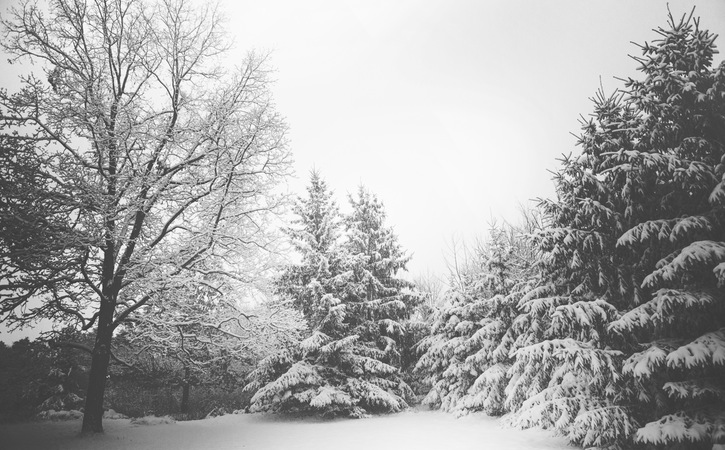Winter Safety Tips

WINTER HAZARDS AND HOW TO PROTECT YOURSELF
Brrr! Cold weather is tough on everyone, but ice, snow and cold temperatures can cause a wide range of health concerns—especially for older adults. So, it’s important for seniors to take extra precautions when the temperature takes a dip.
The most common winter health hazard for older adults:
HYPOTHERMIA
Hypothermia occurs when your body temperature drops dangerously low due to excessive heat loss from being exposed to cold temperatures too long.
Warning signs:
- uncontrolled shivering
- cold skin that is pale or ashy
- Feeling weak, confused and sleepy
- difficulty walking
- slowed breathing or heart rate
Precautions to take:
- Stay indoors and keep the temperature cozy and warm.
- Dress in layers indoors and out.
- Stay dry.
- Going outside? Dress warm and cover skin that is exposed.
If your body temperature drops below 95 degrees, seek medical assistance. Remove wet clothing and wrap up in a warm blanket. Do not take a hot shower or bath — it can cause shock.
FROSTBITE
Frostbite occurs when tissues freeze after being exposed to extremely cold temperatures. It most often affects the nose, ears, cheeks, chin, fingers or toes.
Warning signs:
- Painful, prickly or itching sensation
- Skin is white, ashy or grayish-yellow
- Skin feels hard or waxy
- Numbness
- Clumsiness due to muscle and joint stiffness
- Blistering, in severe cases
Precautions to take:
- Dress warm and cover up when you’re out in cold weather.
- Go inside right away if you skin starts hurting or turns red.
If frostbite occurs, seek medical attention as soon as possible. Remove wet clothing and wrap up in a warm blanket. Soak affected area in warm, not hot, water. Do not rub frostbitten skin – it can cause more damage. Do not use a heat lamp, hair dryer, heating pad or fireplace for warming – frostbitten skin can be easily burned.
CARBON MONOXIDE POISONING
Carbon Monoxide (CO) is an odorless gas that you can’t see, smell or taste — it’s toxic. When inhaled, it can cause brain damage or even death. Carbon monoxide poisoning is a much bigger risk during the cold-weather months due increased exposure to carbon monoxide from faulty stoves, fireplaces and heaters.
Warning signs:
- Headache
- Weakness
- Nausea or vomiting
- Dizziness
- Confusion
- Blurred vision
- Loss of consciousness
Precautions to take:
- Have your chimneys and flues inspected every year.
- Crack a window when using a kerosene heater.
- Install smoke and carbon monoxide detectors throughout your home.
- Don’t heat your home using a gas stove or charcoal grill.
- Don’t run your car in the garage.
If you experience the signs and symptoms of carbon monoxide poisoning, get outside immediately and call for help.
FALLS
Falls are the leading cause of fatal and non-fatal injuries for people 65 years and older and can result in broken bones, lacerations and head injuries. The risk for falls, trips and slips increases with snow and ice.
Precautions to take:
- Plan ahead. Plan your outings around the weather. Wait until the weather and pathways clear.
- Wear shoes with good traction and non-skid soles indoors and out.
- Walk with a cane or walking stick.
- Once indoors, change out of your wet shoes to avoid slipping.
- Clear snow and ice from driveways and sidewalks.
- Take short steps and walk at a slower pace when walking on a slippery surface.
HEART ATTACKS
Exposure to colder temperatures can cause strain on your heart—blood vessels constrict, reducing the blood flow to your heart. Basically, your heart has to work double time to keep you warm. Shoveling snow or any other strenuous exercise during cold weather can increase your risk of a heart attack.
Warning signs:
- Chest pain and irregular heart beat
- Shortness of breath
- Sudden fatigue or dizziness
- Sweating
- Nausea and vomiting
Precautions to take:
- Warm up before shoveling snow or working in cold temperatures.
- Take frequent breaks.
- Wear layers to regulate your body temperature.
If you experience the signs and symptoms of a heart attack, don’t ignore them. Seek medical attention immediately.
Stay alert this winter and use these strategies to stay safe and healthy. Spring will be here before you know it!




